- europages
- >
- COMPANIES - SUPPLIERS - SERVICE PROVIDERS
- >
- pretreatment
Results for
Pretreatment - Import export
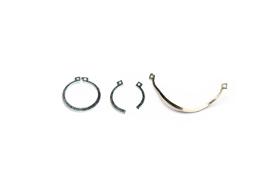
DR.-ING. MAX SCHLÖTTER GMBH & CO. KG.
Germany
Pretreatment is a crucial step in electroplating. During the manufacturing of components, oils and fats are used to facilitate the machining of the workpieces and temporarily protect the metal surface from corrosion. Before the electroplating process, these oils and fats must be removed from the workpiece to be plated, as any residues can lead to coating defects. A thorough pretreatment is an important prerequisite for a high-quality coating. Depending on the process sequence, pretreatment may involve multiple steps. In this group of processes, Schlötter offers boiling or hot degreasing, electrolytic degreasing for a variety of base materials such as steel, copper, brass, as well as pretreatments for aluminum and zinc die casting.
Request for a quote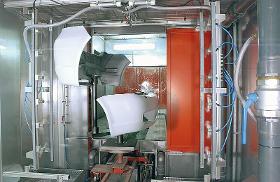
RIPPERT ANLAGENTECHNIK GMBH & CO. KG
Germany
The majority of plastics used today are very susceptible to the formation of electrostatic charges on the surface. The result of this is that the surfaces are strongly attractive to particles floating in the surrounding air. These adhering particles must be removed before painting. Dirt is difficult to remove from three-dimensional or structured surfaces using conventional methods. Components such as goods carriers, which are used continuously in circulating operation, are usually also difficult to clean on account of their geometry. The dynamic ionisation station has been developed especially for these applications. The goods carriers with the three-dimensional workpieces usually pass through the ionisation station standing on, or suspended from conveyor systems. Ionisation electrodes installed in the inlet and outlet generate positively and negatively charged ions, which are transported by the flow of air to the plastic surfaces. The static surface charges are neutralised as a result. The rotary cleaning nozzles located in-between remove adhering particles from the surfaces of the workpieces using cleaned compressed air. Dust and material particles are blown away by a pulsating air flow from different directions due to the rotation of the nozzles. This highly effective method enables even dirt on shaped parts to be cleaned off reliably. The particles cleaned off in this station are fed to a filtered extraction device by targeted air guidance.
Request for a quote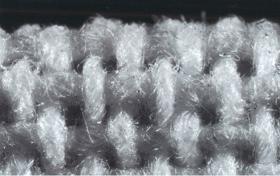
CROUVEZIER DEVELOPPEMENT - UP'TEXTILE
France
Singeing consists in burning off projecting fibres, without damaging the fabric, in order to obtain a smooth surface and minimise pilling. This technique is commonly used on natural fibre fabrics and synthetic and natural fibre blend fabrics. Singeing consists in burning off projecting fibres, without damaging the fabric, in order to obtain a smooth surface and minimise pilling. This technique is commonly used on natural fibre fabrics and synthetic and natural fibre blend fabrics. The purpose of bleaching is to remove natural colouring matters with the production of a pure white material. Washing : This step consists of cleaning the fabric of any excess chemical residues from the previous steps.
Request for a quote
RIPPERT ANLAGENTECHNIK GMBH & CO. KG
Germany
Device for automatically blowing the adhering water off after passing through the pretreatment plant. The rotary blow-off zone is a device for blowing the adhesive water off workpieces that have been washed for the purposes of painting. It consists of a closed stainless steel sheet metal housing with forced ventilation and is employed immediately after the washing installation. In order to achieve more effective drying in the case of fissured surfaces, the blower nozzles are arranged on a rotary axis. The adhering water is blown off by the parts by air blown at high speed through the rotary blower nozzles. The effect of this is that no water droplets remain on the workpiece that could lead to slight marks in the paint film. Due to the varying blowing direction, the water is also blown out of problem zones and scooped parts in most cases. In order to be able to optimise the direction of the blower nozzle air jets, the nozzles have adjustable nozzle heads. The water that is blown off runs back into the pretreatment plant. The blowing air is extracted from the blowing tunnel via a return air duct with adjustable suction apertures.
Request for a quote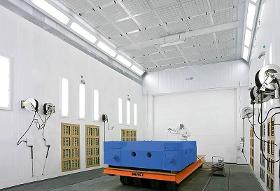
RIPPERT ANLAGENTECHNIK GMBH & CO. KG
Germany
Up to three processes – cleaning, painting and drying in one booth. Multi-process booth Just one booth for cleaning, painting and drying (up to three processes). Dry paint filter and wet cleaning in one booth – that is actually a contradiction in itself. Thanks to the separate air guidance, the exhaust air is fed downwards through the grating when drying and laterally through the filter boxes when painting, so that very little moisture enters the dry filter and virtually no particles get into the cleaning water. In order to prevent the ingress of particles, the gratings can additionally be covered over during painting. Any paint that does get into the cleaning water is usually already dry, so that no dilution in the classic sense takes place; instead, it behaves like small, filterable plastic balls. Advantages:
Request for a quoteDo you sell or make similar products?
Sign up to europages and have your products listed

RIPPERT ANLAGENTECHNIK GMBH & CO. KG
Germany
Complex cleaning equipment with a low space requirement. Chamber pretreatment Chamber pretreatment plants are the best choice whenever little space is to be taken up. In this way complex cleaning plants can be realised in a very compact installation space. In order to cover the complete outer contour of the components as far as possible, either the components or the nozzle holders oscillate during the process. A special version is the single-chamber pretreatment unit. In this case different programmes are successively executed in a single chamber, wherein the media are fed to separate tanks following each process.
Request for a quote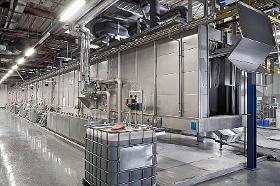
RIPPERT ANLAGENTECHNIK GMBH & CO. KG
Germany
Continuous flow pretreatment plants are designed for high throughput and consist of cleaning stages (degreasing), rinsing stages and possibly layer-forming processes such as phosphatisation. Continuous flow pretreatment Continuous flow pretreatment plants are universally usable. Their high throughput performances in particular make them interesting for many applications. Spraying rings apply different media to the components as they pass through. In the successive zones, therefore, the parts can pass through a cleaning programme tailored to the particular application that guarantees optimum and constant quality. Rippert builds continuous flow plants for small sheet metal parts up to large-scale drag cleaning with a high quality of workmanship. Multi-channel pretreatment plants are also possible, as is combined pre-cleaning by means of robots.
Request for a quote
VOGAMAKINA INDUSTRIAL PLANTS LTD. CO.
Turkey
We produce project and customer based automatic and immersion type pretreatment systems according to the work piece raw material, their sizes, weight, daily quantities.
Request for a quote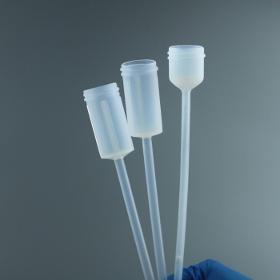
NANJING LAB
United Kingdom
Microcolumns are used to perform ion-exchange sample preparation in geochemistry. Our PFA microcolumn has a variety of sizes of liquid storage and capillary. Special non-welded microcolumns (The integrated mold is cast into a reservoir and the capillary is connected seamlessly). We can also customize microcolumns. Welcome to consult. Sizes: Common specifications are 1.5ml 15ml 30ml (integrated growth, tube length limit 195mm, supporting different sieve plates according to the number of resin mesh) At the same time can be customized 3ml, 7ml and other specifications of micro column, to meet the experimental needs of customers
Request for a quoteResults for
Pretreatment - Import exportNumber of results
10 ProductsCountries
Company type